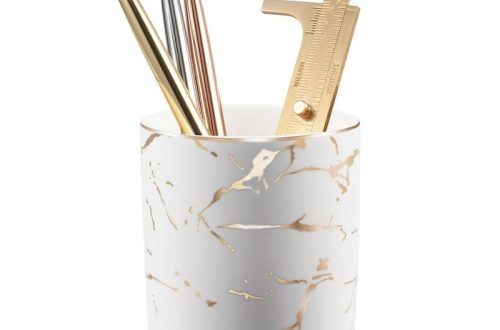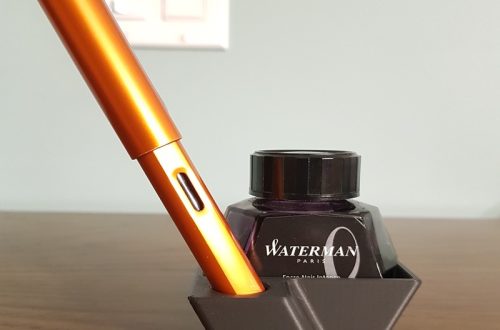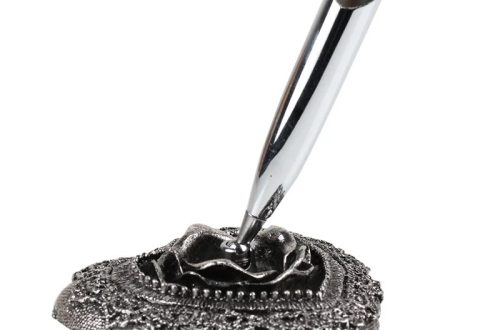Part 1: Getting Started with Ink Pen Illustrations
When it comes to creating stunning drawings, many artists turn to ink pen illustrations for their unique and bold aesthetic. Whether you’re a beginner looking to explore a new medium or an experienced artist wanting to refine your skills, creating ink pen illustrations can be a rewarding and enjoyable process. Here are a few tips to get started.
1. Choose the right materials:
Before embarking on your ink pen illustration journey, it’s crucial to assemble the right tools to bring your creative visions to life. Investing in high-quality ink pens is paramount. Explore a range of tip sizes to achieve diverse line weights and styles. From fine-tipped pens for intricate details to broader nibs for bold strokes, the variety will empower your artistic expression.
The choice of paper plays a pivotal role in the outcome of your illustrations. Experiment with different types to discover the textures and surfaces that resonate with your style. A smooth, heavyweight paper provides an ideal canvas for detailed illustrations, allowing precise lines and delicate shading. Conversely, a rougher paper can introduce an intriguing texture to your drawings, adding depth and character to your artwork.
2. Practice different techniques:
Ink pen illustrations offer a wide range of techniques that can be used to create unique and dynamic artwork. Experiment with hatching and cross-hatching to add depth and dimension to your drawings, while stippling can create a beautiful stippled effect. Additionally, consider using different line weights and styles to add interest and variety to your illustrations. Practice these techniques on different types of paper to get a feel for how they interact with the surface.

Part 2: Developing Your Drawing Skills
Once you have the basics down, it’s time to focus on developing your drawing skills to create stunning ink pen illustrations.
1. Study Different Styles: A Deeper Dive
To truly master the art of ink pen illustration, it’s imperative to delve deep into the diverse styles and techniques employed by other artists. Explore the works of both contemporary and historical illustrators, paying close attention to their use of line, shape, and texture.
- Line Weight: Observe how different artists manipulate line weight to create depth, emphasis, and movement. Notice how varying line thicknesses can suggest form, texture, and even emotion.
- Hatching and Cross-hatching: Experiment with hatching and cross-hatching techniques to create shading, texture, and depth in your illustrations. Understand how the direction and density of these patterns can affect the overall mood and atmosphere of your piece.
- Pen Nibs: Explore the different types of pen nibs available, such as flat nibs, pointed nibs, and flex nibs. Each nib offers unique characteristics and capabilities, so experiment with different options to find the one that best suits your style and desired effects.
By studying the work of others and experimenting with various techniques, you can develop your own unique style and approach to ink pen illustration.
2. Work on Composition: Building a Strong Foundation

Composition is the backbone of a successful ink pen illustration. It’s how you arrange the elements of your artwork to create a visually appealing and engaging piece. Here are some key compositional principles to consider:
- Rule of Thirds: Divide your canvas into nine equal parts using two horizontal and two vertical lines. Place the most important elements of your illustration at the intersections of these lines to create a more dynamic and visually interesting composition.
- Balance: Strive for a balanced composition by distributing the visual weight of your elements evenly throughout the piece. This can be achieved through symmetrical or asymmetrical arrangements.
- Focal Point: Identify the main focal point of your illustration and guide the viewer’s eye towards it using leading lines, contrast, or placement.
- Negative Space: Utilize negative space effectively to create visual interest and balance. The empty spaces around your subjects can be just as important as the subjects themselves.
Part 3: Adding Detail and Texture
Detail and texture are important elements in creating stunning ink pen illustrations. Here’s how to master these aspects of your drawings.
1. Experiment with Different Mark-Making:
Ink pen illustrations offer a vast array of mark-making possibilities that can add depth, texture, and visual interest to your artwork. By experimenting with different types of lines, dots, and dashes, you can create unique textures and patterns that enhance your illustrations.

- Line Variations: Explore various line types, such as straight lines, curved lines, wavy lines, and zigzag lines. Experiment with different line weights and styles to create a sense of movement, energy, and depth.
- Dot Patterns: Create intricate textures and patterns using dots of varying sizes and spacing. Experiment with different dot patterns to achieve desired effects, such as stippling, pointillism, or halftone shading.
- Dash and Hatching: Use dashes and hatching techniques to create shading, texture, and depth in your illustrations. Experiment with different hatching patterns and densities to achieve desired tonal variations.
By exploring different mark-making techniques, you can unlock the full potential of ink pen illustration and create unique and visually captivating artworks.
2. Use Contrast to Create Depth:
Contrast is a powerful tool in ink pen illustration that can help create depth, dimension, and visual interest. By using varying line weights, you can create a sense of space and volume in your drawings.
- Foreground and Background: Use thicker lines for foreground elements to bring them closer to the viewer and create a sense of depth. Use lighter lines for background elements to push them further back into the scene.
- Light and Shadow: Experiment with the use of light and shadow to add depth and dimension to your illustrations. Use shading techniques such as hatching, cross-hatching, or stippling to create shadows and highlights.
- Contrast of Textures: Combine different textures and patterns to create visual contrast and interest. For example, you could use a smooth texture for a foreground object and a rough texture for a background element.
Part 4: Adding Color to Your Ink Pen Illustrations
While ink pen illustrations are traditionally monochromatic, there are still opportunities to add color to your artwork. Here are a few tips for adding color to your ink pen illustrations.

1. Embrace the Watercolor Wash:
Dip your ink pen into a jar of watercolor paint and let the magic happen. The subtle washes of color that watercolor can add to your ink pen illustrations create a depth and dimension that’s hard to replicate with other mediums. Experiment with different techniques, like dry brushing, wet-on-wet, and layering, to achieve various effects. You can create soft gradients, vibrant splashes, or even realistic shadows using watercolor. The possibilities are endless!
2. Unleash the Power of Colored Ink:
Colored ink offers a versatility that’s hard to beat. You can use it to create everything from delicate lines and patterns to bold blocks of color. Experiment with different types of colored ink, like fountain pen ink, alcohol markers, and India ink, to find the one that suits your style. You can also mix colored inks to create custom shades and hues.
3. Add Depth with Colored Pencils:
Colored pencils are a great way to add detail and texture to your ink pen illustrations. You can use them to create realistic shading, subtle gradients, and even intricate patterns. Experiment with different techniques, like hatching, cross-hatching, and blending, to achieve various effects. You can also use colored pencils to add highlights and accents to your ink pen drawings.

4. Create Bold Statements with Markers:
Markers are a great way to add pops of color and energy to your ink pen illustrations. They’re perfect for creating bold outlines, flat washes, and even abstract designs. Experiment with different types of markers, like fine-tip markers, brush-tip markers, and alcohol markers, to find the one that suits your style. You can also use markers to create layered effects and even add textures to your drawings.
5. Combine Different Mediums for Maximum Impact:
Don’t be afraid to experiment with different combinations of mediums to create unique and eye-catching effects. You can use watercolor to add washes of color to your ink pen drawings, then use colored pencils to add details and highlights. Or you can use markers to create a bold outline, then use colored ink to fill in the shapes. The possibilities are endless!
Creating stunning ink pen illustrations requires patience, practice, and a willingness to experiment with different techniques and materials. By mastering the basics, developing your drawing skills, adding detail and texture, and experimenting with color, you can create unique and striking artwork that showcases the beauty and versatility of ink pen illustrations. So go ahead, pick up an ink pen, and start creating your own stunning drawings today.




